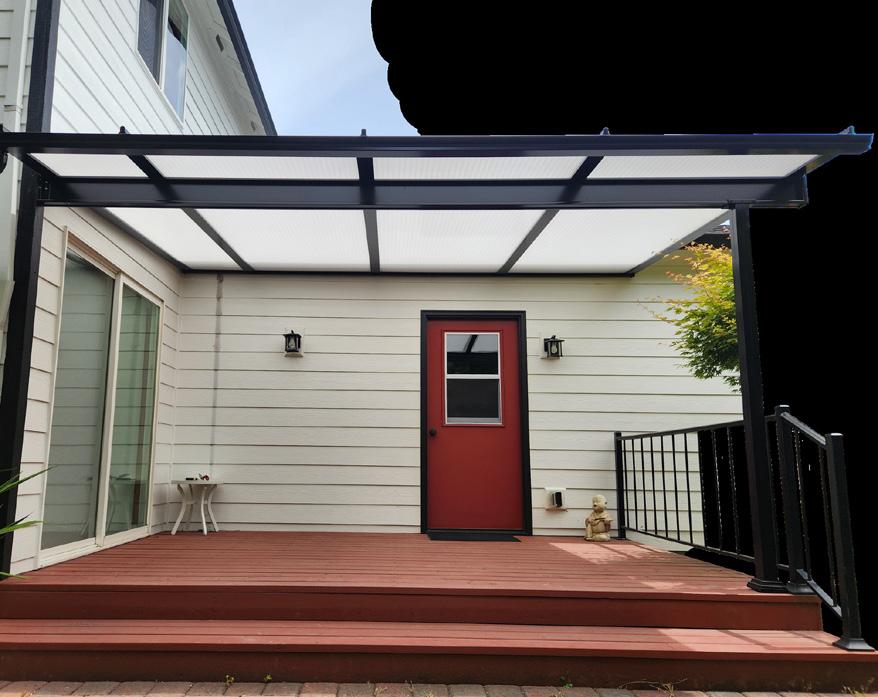



























Published by
Active Media Publishing Group
PO Box 672, Aurora, OR 97002
info@ActiveMediaUSA.com
503.825.2111
ADMINISTRATION
Matthew Nelson, Publisher Catrina Nelson, CFO
Tara Weidman, Executive Assistant
Raeann Van Arsadall, Business Development
PRODUCTION
Jeremy Okai Davis, Art Director
Donovan Darling, Creative Project Manager
Brittany Jungenberg, Director of Marketing
Kate Astle, Copyeditor
Kaity VanHoose, Social Media Manager
SENIOR GRAPHIC DESIGNERS
Hilary Berg Sean Carver
Brittany Jungenberg Morgan King
Shawn Schmidt
GRAPHIC DESIGNERS
Dani DeGraw, Justin Nelson, Kaity VanHoose
CONTRIBUTING WRITERS
Patti Jo Brooks Olive Gallagher
Angie Helvey Lucas Holmgren
Robert Matsumura Dennis McNabb
Peter Murphy Edward Novak
Malia Riggs Kelly Romo
Gretchen Van Lente Ty Walker
Justin Woomer Kerry Yu
CONTRIBUTING PHOTOGRAPHERS
Laurel Bice Carly Carpenter
Tyler Francke Angie Helvey
Brittany Jungenberg Malaina Kinne
Lisa Kuhlman Kara Langley
MJ Media Productions Andrew Sambuceto
Henry Schifter Hayley Starkey
ADVERTISING SPECIALISTS
Don Ormsby Bill Kistler
Stephanie Baker Peggy Jacobs
David Long Chris O’Brien
John Zobrist Brad Marti
Shelley Zeman Tina Toney
Darren Dwyer
Looking to reach local consumers?
We specialize in direct-mail products: community magazine advertising, mailing inserts, postcards and more. For more details, call 503.825.2111 or email info@ActiveMediaUSA.com
CHECK

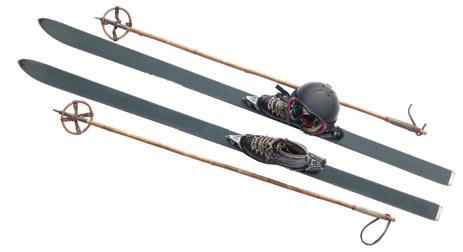



THE LIBRARY WILL BE CLOSED JANUARY 1ST FOR NEW YEARS, AND JANUARY 20TH FOR MARTIN LUTHER KING JR DAY
Stop by on January 25, for STEAM 11am - 1pm
Sun, Dec 1 2024 through Fri, Feb 28 2025
STEAM Saturdays are back! Drop in to work with 3D pens, Snap Circuits, robots and so much more. There is something for everyone at this station-based program. Everyone welcome.

Dec 1 2024 through Feb 28 2025
We invite you to expand your reading life and explore new voices and genres this winter--now with more prizes! To participate, stop by the Library or scan the QR to sign up and learn more.
Books & Bricks Youth Winter Reading Challenge
Sat, Dec 21 2024 through Tue, Jan 14 2025
School-age kids can join the Books & Bricks Winter Reading Challenge, our yearly LEGOthemed event to help encourage kids to read during winter break.To participate, stop by the Library or scan the QR to sign up and learn more.

Services Available
• Storytimes
• Library of Things
• Digital Magazines
• 3D Printing
• Library Mail Service
• Fun Children’s Area
• Tech Help
• Streaming Movies
• E-books
• Audiobooks
• Digital Newsstand
• Live Homework Help





























expeditions highlighted skiing’s potential for both exploration and adventure and set the stage for skiing’s eventual evolution towards recreation.

By Robert Matsumura, Active Media
Skiing, a sport we associate with thrilling slopes and high-speed descents, has a history that stretches back thousands of years. Though it’s known today for adrenaline-fueled competitions and recreation, skiing’s origins trace back to survival, transportation, and innovation.
On the frozen landscapes of prehistoric Europe and Asia the first evidence of skiing is found. The earliest finds date back to around 6,000 BCE in Scandinavia and Siberia, where ancient people used skis not for recreation, but as a practical means of navigating the snow and ice. Archaeologists believe that early skis were made from wood and bone with bindings that secured the feet of the skiers to the boards. In Norway, for instance, skis allowed hunters and herders to travel great distances through snow-covered terrain, making them an essential of daily life. The word “ski” itself derives from the Old Norse word skio, meaning “stick of wood.”
Fast forwarding to the 18th century, skiing evolved beyond a survival skill to become a part of military operations. Skiing played a pivotal role in the battles between Norwegian and Swedish forces, particularly during the Winter War of 18081809. Ski soldiers navigated through deep snow to provide tactical advantages in warfare.
One of the most significant figures in skiing’s history was Norwegian explorer, diplomat, and skier Fridtjof Nansen. Pioneering the use of skis for polar exploration, Nansen famously led the first crossing of Greenland on skis in 1888. His
The late 19th century saw skiing’s transformation into a popular recreational activity. In 1850, Norwegian native Sondre Norheim developed the first bindings that allowed for greater control, a major turning point in ski technology. Norheim’s innovations, along with the growing interest in alpine sports, helped skiing progress from practicality to recreation.
In the early 1900s, Norway hosted the first-ever ski competitions, attracting spectators and participants from around the world. It wasn’t long before skiing spread to other regions, with ski resorts opening in the Alps and North America. By the 1920s, skiing had established itself as a popular sport, with the first Winter Olympic Games in 1924 including ski events like cross-country and ski jumping.

Fast forward to the 21st century, and skiing is a global sport enjoyed by millions, from weekend warriors to Olympic athletes. Modern skiing technology has evolved from the rudimentary wooden skis of ancient times. Lightweight materials, improved ski designs, and high-tech bindings have made possible faster, safer skiing with greater accessibility. Ski resorts, with their snow-covered slopes and striking vistas, have become a staple of winter vacations, attracting people from all walks of life. Yet despite its widespread popularity as a sport, skiing still retains its spirit of innovation and adventure. Whether you’re tackling a black diamond run or cruising down a beginner hill, the thrill of skiing resonates with the same spirit of exploration and freedom that began thousands of years ago.






















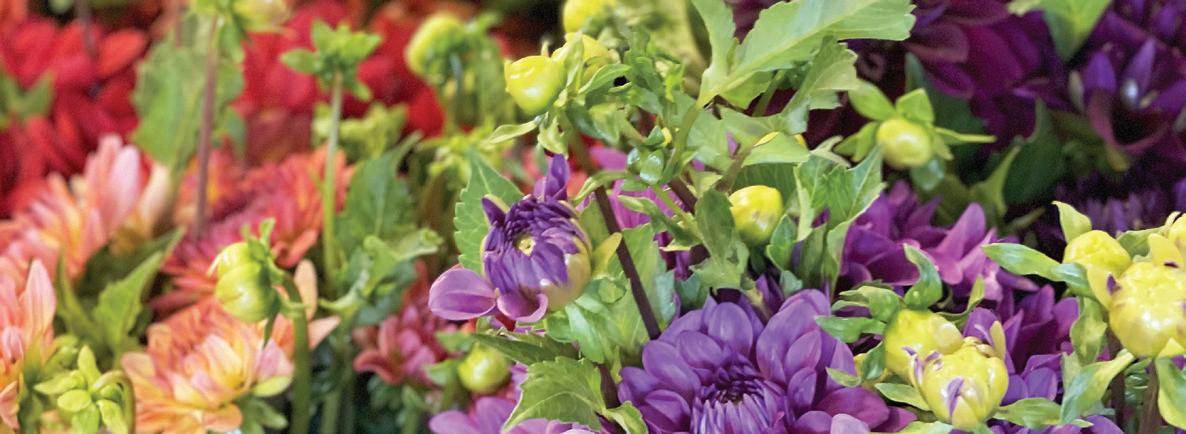





H Z N D H F T E V Z W S P T H H J Y T G F U G J C D M
P E P P E R M I N T C P X K E E I I J O K U N M T X H S C X Q Z U O Z I A V






OREGON BLACK HISTORY SPOTLIGHT: THELMA JOHNSON STREAT
By Oregon Black Pioneers
Thelma Johnson Streat was a painter and dancer who used her art to promote racial equity and education. Thelma Beatrice Johnson was born in 1911 or 1912 in the Eastern Washington town of Yakima. The Johnson family moved several times during Thelma’s childhood, with stints in Pendleton and Boise before settling permanently in Portland by 1920. Her father, James Johnson, was an artist and encouraged Thelma to become an artist herself from an early age. While still in high school, Thelma began winning local art prizes. She graduated from Portland’s Washington High School in 1932 and immediately launched her career as a professional artist.
In 1933, the Oregon Federation of Colored Women had an art exhibit at the New York Public Library. Several of Johnson’s works were featured in the show, and the exhibit gave her new exposure within the broader American art community. Johnson studied painting at Portland’s Museum Art School (today known as the Pacific Northwest College of Art) from 1934-1935, and at the University of Oregon in 1936.

In 1935, Thelma married Romaine Virgil Streat, a boxer who modeled for her drawing class. The couple moved to San Francisco where Thelma found work with the Federal Art Project, a Depression-era relief program for artists. Thelma’s work attracted the attention of acclaimed painter Diego Rivera, who she collaborated with on a mural for the 1939 Golden Gate Exposition. Rivera would write, “The work of Thelma Johnson Streat is in my opinion one of the most interesting manifestations in this country at the present. It is extremely evolved and sophisticated enough to reconquer the grace and purity of African and American art.” Rivera even painted Johnson into one of his own murals, which is today on the City College of San Francisco campus.
Thelma continued to grow as a solo artist. Her paintings were exhibited at San Francisco’s De Young Museum and the San Francisco Museum of Art. One of her works, Rabbit Man, was purchased by New York’s Museum of Modern Art in 1941, making it the first piece by a Black woman included in their permanent collection.
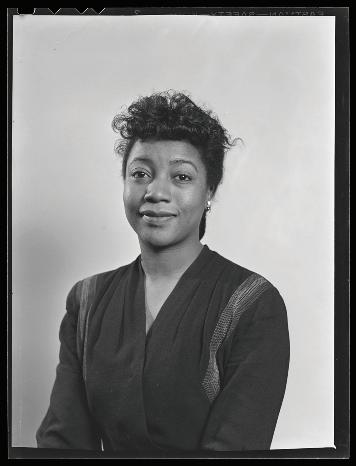
Thelma used her art to promote racial equality. Works like her “Death of a Negro Sailor” criticized segregation, and she debuted a series of paintings called “The Negro History” depicting prominent people of African descent from the past. She also began practicing interpretive dance in the 1940s, performing around the world for dignitaries like Eleanor Roosevelt and Queen Elizabeth II.
In 1948, Thelma divorced her husband and married her manager, John Kline. Thelma and John moved to Hawaii and opened a children’s art school. They later opened another on Salt Spring Island in British Columbia. Here, Thelma taught her students art and dance inspired by African, Polynesian and First Nations traditions.
Thelma enrolled at UCLA to study anthropology in 1956, but suffered a heart attack and died there that same year. Her brief but prolific career was largely forgotten in the decades that followed. Today, Thelma is finally being recognized as one of the most important West Coast artists of the early 20th century. Paintings by Thelma are today part of the collections of the Museum of Modern Art, San Francisco Museum of Art, Portland Art Museum, and the National Museum of African American History and Culture.
Oregon Black Pioneers is Oregon’s only historical society dedicated to preserving and presenting the experiences of African Americans statewide. To learn more, and to support this nonprofit, visit oregonblackpioneers.org.
©Oregon Black Pioneers, 2024



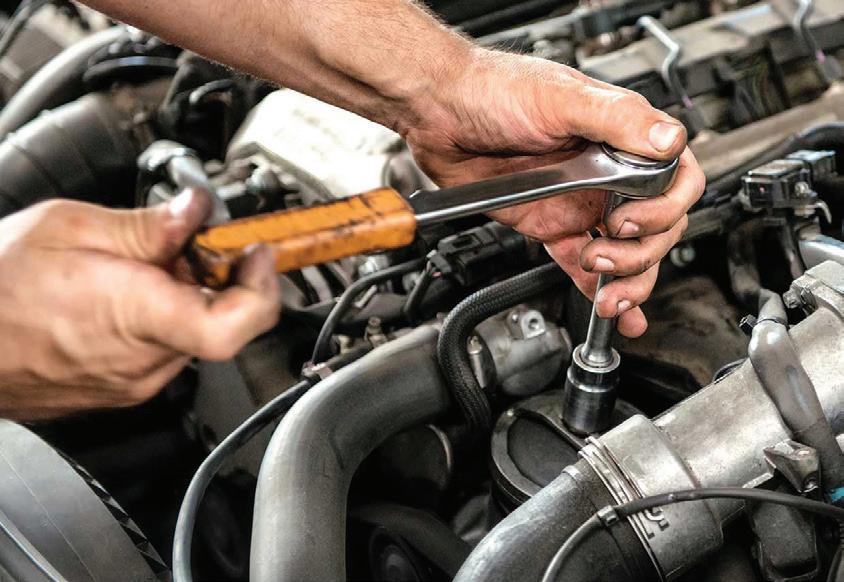






























No project too large or too small!

By Patti Jo Brooks, Active Media
Photos by Brittany Jungenberg, Active Media
Thought about replacing that worn-out, dated garage door? Do your spirits sink just a bit every time you pull up to it? Perhaps it’s broken or annoyingly noisy? Call the experts! Serving the Greater Portland-Metro Area and SW Washington, this family-owned and -operated business services everything from squeaky doors and broken springs to custom installations and repairs for both residential and commercial properties. Don’t let the name mislead you. Oregon City Garage Door’s headquarters is located in Clackamas, but with twelve field technicians and four estimators this local company covers a lot of ground! Oregon City Garage Door will install, repair and maintain your new or existing garage door at any location throughout the Greater Portland-Metro Area. “Let Oregon City Garage Door Open the Door for You!”

installation once they arrive at the local distribution center in Portland. Depending on the make and model, some doors are already in stock. Custom orders typically take a standard of three to four weeks to reach the local warehouse.

When you call Oregon City Garage Door, “You’re calling a professional,” says owner Ryan Dissen. Focused on customer service and fast turnaround time, many repairs are handled with same-day service. “We have 11 vehicles stocked and ready to go,” Ryan points out. New doors, manufactured by Clopay (American-made and American-owned), can be scheduled for
Visit the Oregon City Garage Door showroom to view a firsthand demonstration of one of their fully operational garage doors. Utilizing a garage door opener, you’ll see how smoothly the installed door opens and closes. The showroom also features doors in four different styles displayed on a sliding track for easy viewing. “We have samples, brochures and literature to help our customers decide which door they would like,” Ryan notes.
An Oregon City native and Air Force veteran, Ryan Dissen continues his close ties to the community through his membership, donations and fundraiser participation for the Oregon City Elks Lodge Christmas Basket program. Oregon City Garage Door also donated labor and installation services to accompany R&S Manufacturing’s donated garage door to La Salle High School for their softball hitting facility.
The Oregon City Garage Door showroom is located at 16000 SE Evelyn St. in Clackamas. Call (503) 664-9982 or visit oregoncitygaragedoor.com for their gallery and additional information.






























3. Cannabidiol is often consumed in this type of gelatin-based fruit snack.
5. After World War II, this organization introduced the first nationwide civilian blood program that continues to this day. (2 words)
6. Eating a home-cooked meal with friends and family once a week helps foster a sense of ________ or another word for a flight you are running to catch.
10. Now employee-owned Oregon grain company named for the founder’s first name, a primary color and the type of operation it takes to process grain. (3 words)
11. Type of corn in Mexico’s iconic soup featuring beef tripe.
13. Pastime uses a hook and yarn to make scarves, blankets, doilies and more.
14. Most expensive type of beef raised in Kobe, Japan.
15. Classic kind of soup often paired with grilled cheese.
month’s serious and not-so-serious

1. Ancient Greek poet credited with the idea of mentoring in his poem “Odyssey.”
2. Available in almost every language, Braille helps the blind community access written communication with specifically arranged _________.
4. American brand so synonymous with slow cookers that most people call these small appliances by its iconic name.
7. Using money today to increase the value of an asset over time.
8. “_________ when wet” describes the No. 1 cause of harm related to mishaps in the bathtub or shower.
9. Named for its color, this most common type of tea in the U.S. is a favorite for serving with ice and lemon.
12. World’s largest cut black diamond, “The Enigma,” weighs a whopping 555.55 __________.


“Yeah, you’re gonna die. It’s a matter of time. That ain’t the question. Question’s whether they’re gonna have a good story to tell about you when you’re gone.”
The movie follows Zak (Zack Gottsagen), a young man with Down syndrome who lives in a North Carolina nursing home and dreams of becoming a professional wrestler. With the help of his roommate, he escapes and starts hitchhiking to a wrestling school run by his idol, the Salt Water Redneck (Thomas Haden Church). On his way Zak meets Tyler (Shia LaBeouf), a fisherman on the run. They quickly become friends, with Tyler mentoring Zak as they travel south by foot and boat, eluding authorities. Eleanor (Dakota Johnson), Zak’s caregiver, eventually finds and joins them on their journey when Tyler convinces her to help Zak achieve his dreams. A heartwarming, thoughtful, and funny adventure with a Mark Twain kind of vibe, this is an inspiring watch for New Year’s. Rated R for mature language and light violence.


“Hope is a good thing, maybe the best of things, and no good thing ever dies.”
A powerful story of hope and perseverance, this movie follows Andy Dufresne (Tim Robbins), a bank vice president in 1940s Maine, who is convicted of the murder of his wife and her lover. Sentenced to serve two consecutive life sentences in Shawshank Prison, Andy pleads his innocence to deaf ears. Resolved to serve his time, he makes friends, helps the guards with their finances, and eventually becomes involved in money laundering. I won’t spoil the ending in case you haven’t seen this 30-year-old classic, but it’s a good one, and a true example of utter resilience against impossible odds. It’s a great movie of hope, friendship, and the strength of the human spirit. Also starring Morgan Freeman, Clancy Brown, and Bob Gunton. Rated R for mature themes, language, and violence.

“Out with the old, in with the new.”
A long-awaited sequel to the 2015 Pixar movie, Inside Out 2 follows Riley as she navigates the emotional challenges of growing up. The movie explores her transition into puberty, introducing new emotions like Anxiety, Envy, Ennui, and Embarrassment, alongside the original characters like Joy, Sadness, Anger, Fear, and Disgust. Riley’s internal emotional world has to adapt to these new and changing feelings as she faces the challenges of growing up, including school and relationships. What’s cool is how this movie portrays the emotional and psychological challenges of adolescence with humor and sensitivity. Universally praised for its relatability on growth, change, and the importance of emotional understanding, it blends humor with life lessons about managing emotions, making it entertaining and meaningful for all ages. Starring Amy Poehler, Phyllis Smith, Lewis Black, Maya Hawke, Ayo Edebiri, Tony Hale, and Liza Lapira. Rated PG for its emotional complexity, mild humor, and mild peril.
New Year’s celebrations date back over 4,000 years to ancient Mesopotamia, where the Babylonians marked the new year not in January but in late March, during the spring equinox. Their festival, called Akitu, lasted 11 days and included rituals to crown a new king or reaffirm loyalty to the current ruler. The switch to January 1 came in 46 BCE when Julius Caesar introduced the Julian calendar. He chose January in honor of Janus, the Roman god of beginnings, transitions, and doorways, symbolizing looking forward to the future and reflecting on the past.
Stream these movies where available, or rent from your local movie store, library or rental kiosk.

DID YOU KNOW? ONION SOUPS HAVE BEEN POPULAR AT LEAST SINCE ROMAN TIMES. WIDELY GROWN AND GENERALLY INEXPENSIVE,
Rich, savory dish a peasant classic
Ingredients
6 tablespoons olive oil
3 pounds yellow onions, halved and thinly sliced
¾ teaspoon sea salt
1½ tablespoons balsamic vinegar
1½ tablespoons tamari (or soy sauce)
1½ tablespoons fresh thyme leaves
3 garlic cloves, minced
3 tablespoons all-purpose flour
1 cup dry white wine
6 cups vegetable broth
freshly ground black pepper
Topping: Baguette slices | Gruyère, aged cheddar or Parmesan | fresh thyme | red pepper flakes (optional)
Directions
Heat oil in large pot or Dutch oven over medium heat. Add onions, salt and several grinds of pepper; toss to combine. Reduce heat to low and cook for about 40 minutes, stirring every few minutes, or until onions are very soft. Increase heat to medium and cook 15 to 20 more minutes, stirring often, until golden brown. Stir in vinegar, tamari, thyme and garlic. Sprinkle flour on onions, stir; cook 2 minutes. Stir in wine; cook 2 minutes, or until evaporated. Add broth and simmer over medium heat for 30 minutes. Preheat oven to 450°F. On parchment-lined baking sheet, bake baguette slices topped with cheese until toasted and cheese melts, 8 to 10 minutes. Ladle soup into ramekins or bowls; top with toasted baguette slice, thyme and pinch of red pepper flakes, if desired.























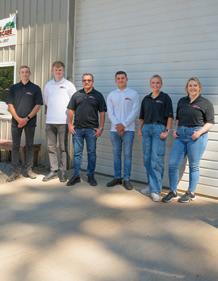




































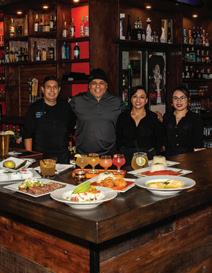
Tualatin Valley Fire & Rescue is grateful for its dedicated cadre of volunteers, who aid us in our mission to create safer communities.
Have you ever considered donating your time and serving your community as a TVF&R volunteer? This exciting opportunity gives you a chance to be part of your fire district. Applications will be accepted from January 9 to February 10.
TVF&R offers two ways you can choose to serve your community:
Incident Support Volunteer: These volunteers bring rehabilitation units to major incidents to provide TVF&R firefighters with assistance with breathing apparatus, medical monitoring, and other support in a non-firefighter capacity. They also participate in public education, attend parades, support community events and activities, and attend monthly drills.

Want to learn more? TVF&R is holding two Volunteer Interest Open Houses from 10 a.m. to 2 p.m.:
Auxiliary Volunteer: These volunteers play an active role in TVF&R’s public education program and attend community events. Auxiliary volunteers are nonemergency response volunteers. They may work once or twice a week or even a few times each year, depending on their area of interest and commitment. They can also help restore and maintain TVF&R’s fleet of antique apparatuses.
All volunteers must be 18 years old or older, have a high school diploma or an equivalent certificate, pass a criminal background check and drug screening, have a valid Oregon driver’s license, and live within TVF&R’s service area. All volunteers must obtain CPR and automated external defibrillator training within six months, and incident support volunteers must also obtain emergency medical responder certification within 12 months.
Saturday, January 18, at TVF&R’s South Operating Center garage located behind Station 56, 8445 SW Elligsen Road in Wilsonville.
Saturday, January 25, at Station 72, 11646 NW Skyline Boulevard in unincorporated Washington County off Cornelius Pass Road.
For more information about TVF&R’s volunteer program or to apply to become a volunteer, visit www.tvfr.com/471/ Volunteer-Program.
and fire

By Robert Matsumura, Active Media

Bubbly. Counting down the final seconds. A kiss at midnight. “Auld Lang Syne.” While our New Year’s Eve traditions are familiar to our own culture, the ways in which people around the world bring in the new year are diverse. From eating grapes in Spain to smashing plates in Denmark, these customs provide a fascinating glimpse into the various ways we celebrate transitioning from one year to the next. No matter your locale, the desire to usher in a fresh start is universal, and every culture has its own unique way of doing so. Here is a look at some of the most intriguing New Year’s Eve traditions from around the globe.
In Spain, counting down to the new year is accompanied by the unique tradition of eating 12 grapes at the stroke of midnight. Each grape represents a month of the year, and eating the whole dozen is believed to bring good luck in the coming year. The key is to eat all 12 grapes prior to the clock’s final chiming. Each grape symbolizes a different hope for the coming year.
The arrival of the new year in Denmark is greeted with the sound of crashing plates! Instead of clinking glasses, Danes believe smashing old plates or dishes on the doorstep of friends and neighbors brings good fortune, removing any bad spirits. The more broken shards the better the luck for the coming year. This quirky custom reflects the Danish concept of hygge, which centers around fostering warmth, coziness and togetherness, despite a few broken dishes along the way.
In Japan, New Year’s Eve centers around deep spiritual reflection, with many traditions rooted in a sense of cleansing and renewal. The Japanese practice of osoji involves cleaning the house thoroughly before New Year’s Day to wash away bad luck and usher in a fresh start. At midnight, many families visit shrines for prayer and meditation, reflecting on the year past and wishing for a prosperous year ahead. In the days leading up to New Year’s Eve, people also send nengajo (New Year’s cards) to friends and family,

acknowledging the connections that bind them. These traditions encompass a serene, peaceful celebration filled with reverence for both past and future.
In Italy, New Year’s Eve is a passionate affair — quite literally. The wearing of red underwear on Dec. 31 is believed to bring good luck and love in the upcoming year. The color red is traditionally associated with happiness, passion and vitality in Italian culture, so why not bring in the year with a little extra luck? At midnight, lentils are often served symbolizing wealth, abundance and the hope that money will be as plentiful as the small legumes. If you’re in Italy, don’t forget to give a kiss at
midnight; just as red symbolizes luck, kissing loved ones is thought to ensure strong relationships in the year to come.
In Scotland, New Year’s Eve is called Hogmanay and is celebrated with much vigor and merriment. One of the most cherished traditions is “first footing,” which involves the first person to enter a household after midnight bringing gifts to ensure good luck for the coming year. The night is filled with dancing, toasts, fireworks and, of course, the singing of “Auld Lang Syne” to bid the old year goodbye.
In Brazil, New Year’s Eve celebrations are particularly vibrant, with people gathering at the beach to celebrate the réveillon. Garbed in white clothes, symbolizing peace and renewal to Brazilians, it’s believed that wearing this attire will attract good luck in the new year. Brazilians also pay homage to the Afro-Brazilian goddess of the sea, Yemanjá, by offering flowers and floating them in the ocean at midnight in small boats. The ritual is believed to ensure blessings for the coming year. Fireworks illuminate the sky and the festive energy on the beaches is expressed through music, dancing and revelry throughout the night.
In Ecuador, the New Year’s Eve celebration takes on a fiery twist. At midnight, many Ecuadorians burn effigies called años viejos (old years), composed of old clothing, straw and fireworks. The effigies symbolize the prior year, with all things negative associated with it. Burning the año viejo is a way of letting go of the past and embracing the new year. It’s a dramatic yet cathartic ritual

in which families, friends and even neighborhoods often compete to create the most impressive año viejo effigy transforming the streets into a spectacle of fire and celebration.
As in Spain, many people in Mexico eat 12 grapes at midnight — one for each chime of the clock. Each grape symbolizes a wish for each month of the coming year. In addition, many Mexicans drop a gold ring into their glass of bubbly wine. As long as they do not remove the ring before hugging everyone in the room and finishing their glass, they will supposedly enjoy good luck in love and financial affairs.
As the clock strikes midnight and the world rings in the new year, it’s fascinating to see how cultures across the globe celebrate this annual milestone. Whether through fire, food, music or the sharing of wishes, New Year’s Eve symbolizes a collective desire for hope, renewal and good fortune. These traditions create a connection to the past while generating excitement for the future — a reminder that no matter where we are in the world, the arrival of a new year is a time to come together, reflect and celebrate.
Consider embracing one of these fascinating global traditions — or create one of your own. After all, making new memories is what it’s all about!
Portland clay artist gives form to “big ideas”

By Patti Jo Brooks, Active Media
Human creativity and imagination take on many forms.
The artist, employing skill and technique, imparts beauty, ideas or emotions through their work.
Clay as an artistic medium is one such form. Artist Paige Wright, proprietor of The Wright Clay Studio, creates and teaches fine art large-scale ceramic sculpture. Offering classes and workshops reminiscent of her childhood experiences is a way for Paige to give back. It’s important to her to engage children and encourage their creativity, to help them find their voice, explore big ideas and discover their dreams.

“I’ve been doing art since the age of 10,” says Paige. “I was very visual, so my mom started me on an afterschool art program here in Portland.” The art classes were based


more on creative expression and finding your voice rather than technique and skill building. Ceramics provided Paige an avenue to experience accountability and integrity through making something “where people took me seriously,” she expresses, explaining that she was not as articulate in other areas. Although school was not her “forte,” she went on to achieve a master’s in ceramics and subsequently offers student apprenticeships at her studio for college credit. Paige held her first professional art show in high school. Her early works were primarily self-portraits, though she sculpted family members, particularly her sister, as well. Fascinated by “the human mechanism,” she contemplated her sister’s features. “What kind of shapes did she get that we share or that are different than mine?” As the artist, she observes, “We all are made up of the same ‘stuff,’ and what’s really cool is how that ‘stuff’ can take on these unique shapes.” Her thoughts turn to how we adorn and decorate the body through tattooing, piercing, wearing certain jewelry or crowns, a veil, a yarmulke. She reflects on “adding those to my pieces and kind of playing around with them.” Paige sees this as a way to view the elements in a different way and at the same time to celebrate them. Gordon, Paige’s dog, “a good studio mate,” she says, often hangs out while she teaches. Weekly classes are offered year round as follows: KIDS (ages 7–14): Sunday, 2–4 p.m. and Thursday, 4:30–6:30 p.m.; and ADULTS (ages 15+): Monday, 10:30 a.m.–1 p.m. and 4:30–7 p.m., and Wednesday, 4:30–7 p.m. Weekend workshops are six hours in total: Saturday, 4:30–7:30 p.m. and Sunday, 10 a.m.–1 p.m. (check the website for details and online registration.)
Late last year at Chefas Projects (a forum for contemporary cutting-edge art), Paige Wright displayed her newest collection of ceramics. Upcoming events, class updates and monthly reminders can be obtained from the website or by signing up for the newsletter.
The Wright Clay Studio is located at 3522 N.E. Liberty Street in Portland. Visits are by appointment only; please email paige@thewrightclay.com to schedule. For additional information and to view Paige’s portfolio, visit www.thewrightclay.com.

By Lucas Holmgren, Active Media
Pacific Northwest residents know that winter can be a beautiful season in Washington and Oregon. Yes, the rain can be torrential, or relentless, but the breaks in between are worth it. If you’ve got layers and appropriate rain gear that truly covers and protects, the winter season can be an outdoor paradise.
For those who have been “hooked” by the almighty steelhead (an ocean-going rainbow trout), winter is when thousands of winter-run steelhead start to return. With a few showing up early, most of the return happens between Christmas and early April. An Internet search of “WDFW hatchery steelhead smolt plants” will show you how many fish were planted in Washington rivers and a lot can be discovered by researching hatcheries near you. Hatchery smolt plants are juvenile steelhead that will out-migrate to the Pacific and return in a few years. They have a clipped and healed scar where their adipose fin once was. Wild steelhead will have an intact adipose fin. In almost every river, harvest of wild steelhead is prohibited, so make sure you know which is which.
The exciting element of winter-run steelhead is the widespread opportunity. For lower Columbia River tributaries and coastal rivers from northern California through southern Alaska, almost every river and sizeable creek gets a return of steelhead. However, they are called “gray ghosts” for a reason.

Here are a few tips about when to fish for winter steelhead based on weather. Techniques are better left to the fishing magazines and YouTube videos you’ll find. These tips apply to winter steelhead, but also trout and salmon.
• Rain can be your friend, but heavy rain can ruin the fishing.
• Afternoons in cold months can be the best time of day for getting a steelhead to bite.

• Dramatic weather changes and temperature changes are either REALLY good for fishing, or more likely, really bad.

• If you look at a water gauge graph on a river and it’s peaked recently and is now on a steady drop, that’s a good time to go.
• If it’s been cold but stable for several days, fish will often start biting again. If water temperature suddenly drops several degrees overnight, you can still catch fish but may need to fish slower and smaller lures/baits.
These are a few general concepts regarding water temperature and weather. Winter is unpredictable but can bring about some of the best fishing of the year. Best of luck out there! And if you’d like to listen to stories and interviews about fishing on a podcast I host, look up the “Salmon Trout Steelheader” Podcast on your favorite podcast app.
LEFT: Jose Ruelas, president of Lamiglas Fishing Rods with a fin-clipped steelhead. ABOVE: Matthew Ghoelke of Battle Ground, Washington, with a beautiful wild Southwest Washington steelhead. TOP: Monty Houston with a beautiful fresh, fin-clipped keeper steelhead.
for the lunar environment, and it subsequently became a key site for the astronauts as they prepared for the Apollo missions.
The astronauts’ time in the McKenzie Pass area was no vacation. From 1964 to 1971, astronauts such as Neil Armstrong, Buzz Aldrin and their colleagues trained in this region of Oregon in full space suits — suits which at the time weighed approximately 300 pounds. Designed to simulate the challenges of walking on the Moon’s surface, these suits replicated the gravitational effects of the Moon, which were significantly less than terrestrial conditions on Earth

By Robert Matsumura, Active Media
Have you ever wondered how NASA astronauts of the 1960s and 1970s prepared for their historic Moon landings? Instead of training in high tech simulators, they headed to Central Oregon’s McKenzie Pass, where the rugged and unique terrain allowed them to practice walking on the Moon. Known as “Moon Country,” this region of Oregon played a vital role in the Apollo lunar missions.
In 1965, Oregon’s McKenzie Pass and its surrounding areas, particularly the volcanic landscape near the Cascade Mountains, were selected by NASA to replicate the Moon’s harsh surface and unique conditions. The volcanic rock, cinder fields and barren patches of ground became the perfect stand-in
The training regime focused on mobility exercises in the bulky suits, including walking, jumping and collecting rock samples. These activities enabled the astronauts to become adept at operating with the limited mobility inherent to the cumbersome suits. NASA purposely included various obstacles in the terrain such as craters, rough patches of volcanic rock, and uneven surfaces to simulate the unpredictable challenges the astronauts would likely face on the Moon.

Some of the specific areas utilized by the NASA scientists and astronauts were Newberry Caldera and the mile-wide ancient crater at Hole in the Ground. While trekking through the black lava flows of McKenzie Pass, astronaut Walter Cunningham stumbled and landed on sharp rocks that punctured his space suit and tore open his glove, demonstrating the potential peril of mishaps on such dangerous terrain.
Training in Oregon also helped the astronauts hone the teamwork and communication skills that would be essential on the Apollo missions. In Oregon’s Moon


Country, astronauts worked in pairs and performed tasks in tandem, as they would on the lunar surface. Due to the unique constraints presented by the lunar environment, astronauts — encumbered by their space suits — frequently had to communicate via hand signals or radios. As there were often delays in the communication system between the astronauts and mission control, such measures were critical for operational efficiency.
By Apollo 11’s historic launch in 1969, the astronauts who had trained in Oregon were well-prepared for the challenges they would face on the Moon. Neil Armstrong and Buzz Aldrin, two of the trainees from the McKenzie Pass area, used the skills they had developed in Oregon to successfully navigate the lunar surface. Armstrong’s famous first steps — “That’s one small step for man, one giant leap for mankind” — were the culmination of years of diligent training, particularly their time in Oregon’s volcanic landscapes.
Today, the McKenzie Pass and the surrounding volcanic region remain largely unchanged, a reminder of the incredible history made here. The landscape still offers a glimpse into the rugged, challenging terrain that NASA astronauts faced during their training for the Apollo missions. Over the years this region has drawn both outdoor enthusiasts and those interested in the history of space exploration. For visitors today, hiking, stargazing and exploring the volcanic landscapes offer a unique window into the past. It’s not every day that one can walk in the footsteps of the
astronauts, navigating the very terrain they did when training to traverse the lunar surface for the first time in human history.
While Oregon’s McKenzie Pass may seem like an unlikely place for space training, it played a pivotal role in preparing NASA astronauts for their historic Moon landings. One of the scientists involved in the program

summarized the goals of the training succinctly: “The main thing was to expose them to as many different geological experiences as we possibly could. Get them out in the field. Don’t let them sit in the classroom.” Looking back on it now, one would have to say that they got it right — Oregon’s Moon Country accomplished this task to a supreme degree.


So, the next time you’re driving through the McKenzie Pass on your way through Central Oregon, reflect on the achievements of the Apollo program and how Oregon’s Moon Country played a critical role in helping America’s astronauts make history on the Moon.


